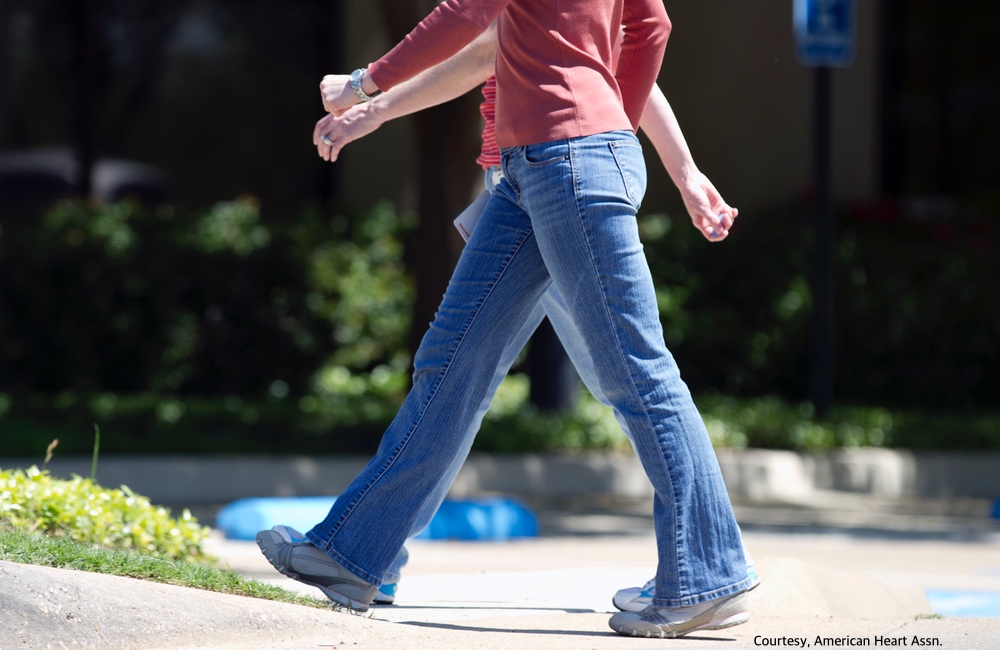Physical activity guidelines in the U.S. currently recommend at least 150 minutes per week of moderate-intensity physical activity for adults to reduce their risk of cardiovascular disease and death.
The minutes-per-week guidelines were developed before activity trackers and cell phones were widely used. As a result, they do not take into account using step counts to measure activity levels, and there has been too little evidence to determine what kind of step count might offer the same sort of protection as 150 minutes a week.
Researchers led by a team from Brigham and Women's Hospital compared the use of time to step count-based exercise targets to measure the reduction in risk of cardiovascular disease and death. They found that measuring steps was equally effective as measuring time spent exercising when it came to determining risk reduction.
It is important that the next round of guidelines offer people multiple ways to measure their progress towards exercise goals, lead author on the study, Rikuta Hamaya, told TheDoctor.If a 20-year-old and an 80-year-old both walk for 30 minutes at moderate intensity, for example, their step counts may be very different.
“Movement looks different for everyone and nearly all forms of movement are beneficial for our health,” he said. If someone likes to swim, using time as a metric works better. For those that like sports such as soccer or tennis, using steps is likely easier, he said.
Both types of units — steps and time — have their pros and cons. Steps are a more straightforward measure of physical activity and less subject to interpretation than exercise intensity. Step counts also measure more than physical activity levels. Step counts are able to measure the effort involved in chores and the movements of daily life, so they may be more a more useful metric for measuring physical activity in older persons.
On the other hand, step counts may not account for differences in fitness levels. If a 20-year-old and an 80-year-old both walk for 30 minutes at moderate intensity, for example, their step counts may be very different.
Data from almost 14,400 participants in the Women's Health Study were analyzed for the current paper. The women were 62 years old and older and had never been diagnosed with cancer. They agreed to fill out yearly questionnaires and measure their physical activity by wearing an accelerometer for seven consecutive days. They were divided into four groups, or quartiles, based on the amount of exercise they got.
Participants logged about 62 minutes and 5,200 steps per week of moderate-to-vigorous exercise. During a follow up period of about nine years. More physical activity was associated with larger reductions in the risk of death or cardiovascular disease. It didn't matter whether exercise was measured in step counts or as time spent exercising — risk reductions were significant.
The most active 25 percent of women had a 30 to 40 percent reduction in risk compared to the least active 25 percent. The most active 75 percent of participants outlived the least active 25 percent of women by 2.22 months if their physical activity levels were measured in time and 2.36 months if measured in step counts. This survival advantage persisted regardless of differences in body mass index.
This study was observational, so it does not prove one metric for measuring physical activity levels is better than the other. Hamaya, a research fellow in preventive medicine at Brigham and Women's Hospital, said he plans to propose a randomized clinical trial of older adults to see which way of measuring physical activity is best for setting goals.
The study and a related editorial are published in JAMA Internal Medicine.





